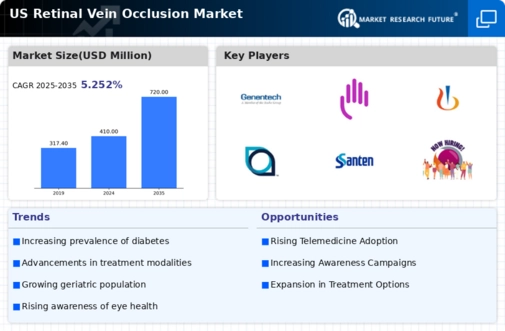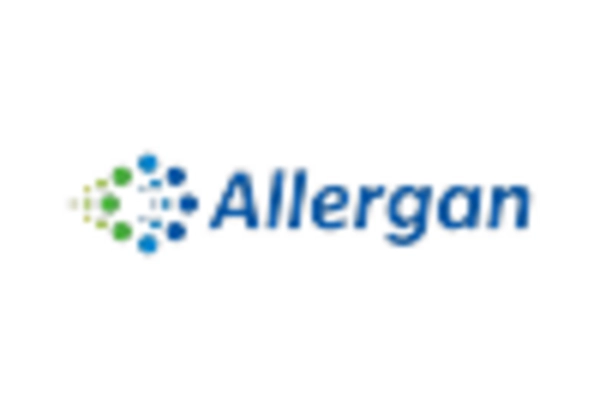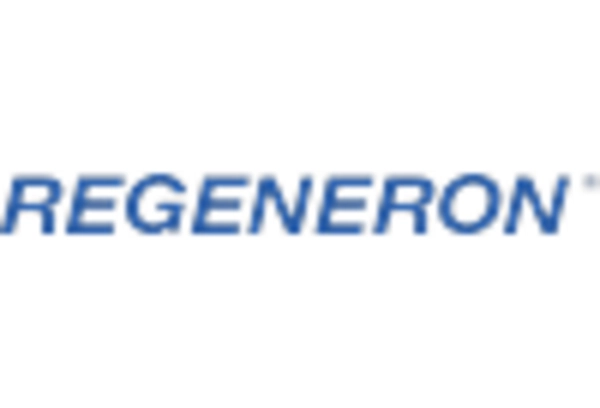Rising Incidence of Retinal Disorders
The increasing prevalence of retinal disorders, particularly retinal vein occlusion, is a notable driver for the retinal vein-occlusion market. As the population ages, the incidence of age-related eye diseases rises, with retinal vein occlusion affecting approximately 16% of individuals over 70 years old. This demographic shift suggests a growing patient population requiring effective treatment options. Furthermore, the American Academy of Ophthalmology indicates that the number of patients diagnosed with retinal vein occlusion is expected to increase, thereby expanding the market. The rising incidence of diabetes and hypertension, both of which are significant risk factors for retinal vein occlusion, further contributes to this trend. Consequently, healthcare providers are likely to focus more on developing and implementing treatment strategies, thereby driving growth in the retinal vein-occlusion market.
Increased Focus on Preventive Eye Care
The growing emphasis on preventive eye care is influencing the retinal vein-occlusion market. Healthcare providers are increasingly advocating for regular eye examinations, particularly for individuals at risk of retinal vein occlusion, such as those with diabetes or hypertension. This proactive approach aims to identify potential issues before they escalate, thereby reducing the incidence of severe complications associated with retinal vein occlusion. Public health campaigns and educational initiatives are also raising awareness about the importance of eye health, encouraging individuals to seek timely medical attention. As more patients engage in preventive care, the demand for diagnostic services and treatments for retinal vein occlusion is likely to rise, contributing to market growth. This shift towards prevention may also lead to improved patient outcomes and reduced healthcare costs in the long term.
Advancements in Diagnostic Technologies
Technological advancements in diagnostic tools are significantly impacting the retinal vein-occlusion market. Innovations such as optical coherence tomography (OCT) and fundus photography have enhanced the ability to diagnose retinal vein occlusion accurately and promptly. These technologies allow for detailed imaging of the retina, enabling ophthalmologists to identify occlusions and assess the severity of the condition effectively. The increased accuracy in diagnosis leads to timely interventions, which are crucial for preventing vision loss. Moreover, the integration of artificial intelligence in diagnostic processes is emerging, potentially improving diagnostic efficiency and patient outcomes. As these technologies become more widely adopted, they are likely to facilitate earlier detection and treatment of retinal vein occlusion, thereby expanding the market.
Growing Investment in Ophthalmic Research
Investment in ophthalmic research is a critical driver for the retinal vein-occlusion market. Pharmaceutical companies and research institutions are increasingly allocating funds to develop novel therapies and treatment modalities for retinal vein occlusion. In recent years, the market has seen a surge in clinical trials aimed at evaluating new drugs and interventions, with funding reaching upwards of $500 million annually. This influx of investment is likely to accelerate the pace of innovation, leading to the introduction of more effective treatment options. Additionally, partnerships between academic institutions and industry players are fostering collaborative research efforts, which may enhance the understanding of retinal vein occlusion and its underlying mechanisms. As a result, the retinal vein-occlusion market is poised for growth driven by these advancements in research and development.
Regulatory Support for Innovative Treatments
Regulatory support for innovative treatments is a significant driver for the retinal vein-occlusion market. The U.S. Food and Drug Administration (FDA) has been actively facilitating the approval process for new therapies targeting retinal vein occlusion, which encourages pharmaceutical companies to invest in research and development. The introduction of expedited review pathways for breakthrough therapies has the potential to bring effective treatments to market more quickly. This regulatory environment fosters innovation and competition, which may lead to a wider array of treatment options for patients. Furthermore, the FDA's commitment to addressing unmet medical needs in ophthalmology is likely to stimulate further advancements in the retinal vein-occlusion market. As new therapies gain approval, they may enhance treatment outcomes and improve the quality of life for patients suffering from this condition.

















Leave a Comment